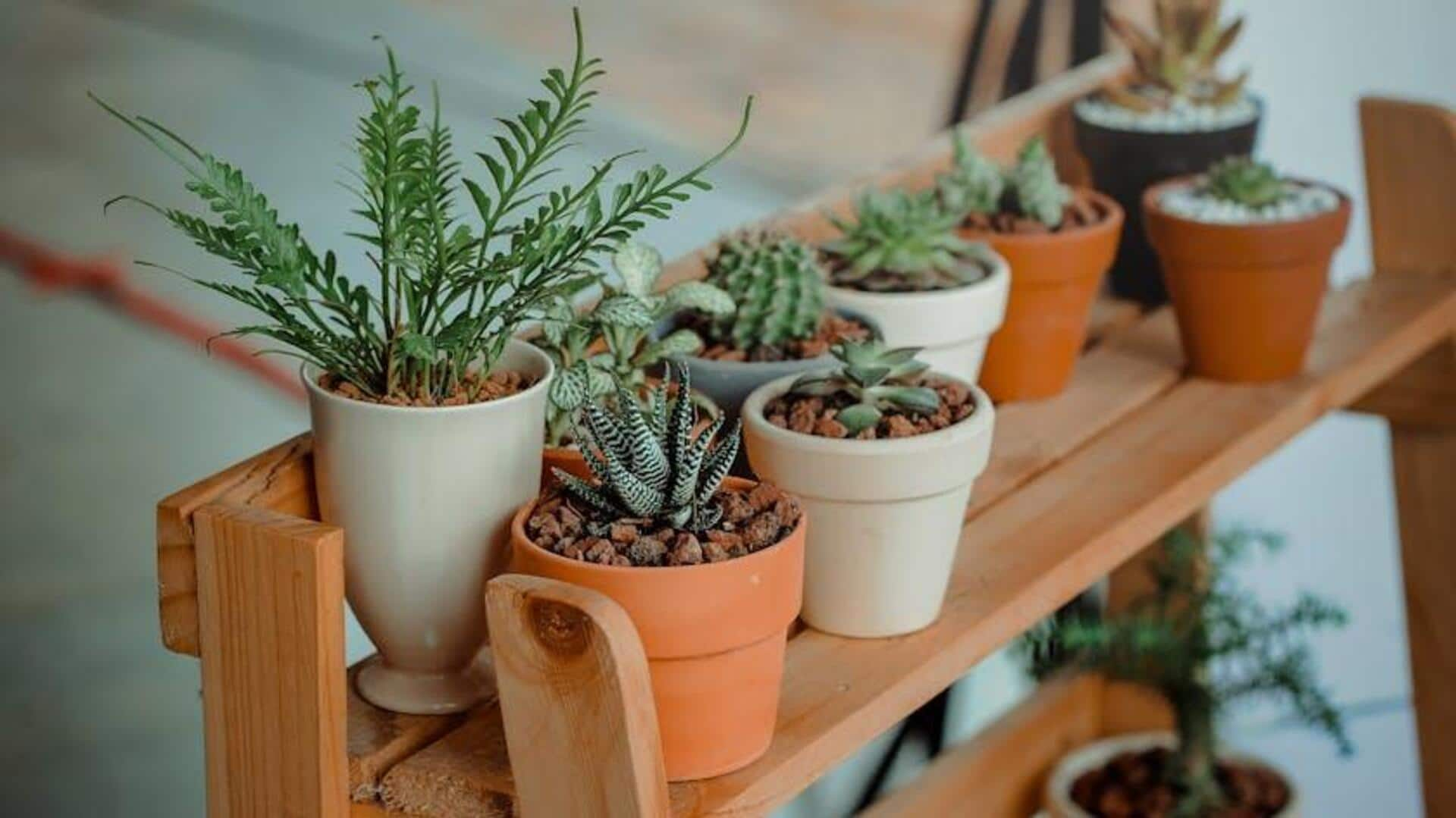
Plant parenting 101: How to water your houseplants
What's the story
Root rot is a common problem that every plant parent faces, mostly due to incorrect watering methods.
It can damage, and even kill, your plants if not caught in time.
Knowing the right way to water your plants is key to preventing root rot and growing them healthily.
With effective watering practices, you can keep your plants thriving and avoid the risks of over/under watering.
Soil choice
Use well-draining soil
Choosing well-draining soil is crucial in preventing root rot.
Such soil allows excess water to escape easily, minimizing the risk of waterlogging around plant roots.
A mix containing sand, perlite, or vermiculite can greatly enhance drainage.
When potting your plants, make sure that the soil composition supports adequate aeration and moisture retention balance.
Timing matters
Water at appropriate intervals
Watering frequency is critical for keeping plants healthy.
Overwatering is one of the biggest causes of root rot as it deprives roots of oxygen.
To prevent that, let the top inch of soil dry out, before watering again. This way, roots get enough air, while still receiving necessary hydration.
Pot design
Ensure proper pot drainage
The design of your plant pots can affect drainage efficiency.
Pots with multiple drainage holes allow for better water flow and prevent stagnation at the bottom.
If you're using decorative pots without holes, try placing a layer of gravel at the bottom or using an inner pot with proper drainage features.
Environmental control
Monitor humidity levels
Humidity levels also affect how fast soil dries up after watering.
If you're in a high humidity environment, cut down on watering frequency as evaporation rates are slower.
On the other hand, in dry conditions, you may need to water more often but stick to checking soil moisture levels before doing so.
Seasonal adaptation
Adjust for seasonal changes
Plants' water requirements change with the season due to variations in temperature and light.
During cooler months or when sunlight reduces, water less as growth slows and evaporation decreases.
During warmer seasons with more sunlight exposure, adjust by increasing the watering frequency a little while keeping a keen eye on soil moisture.